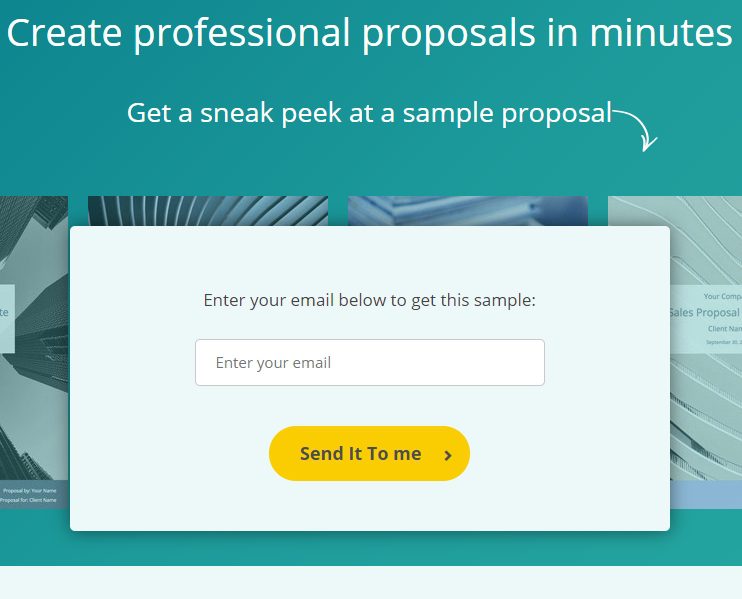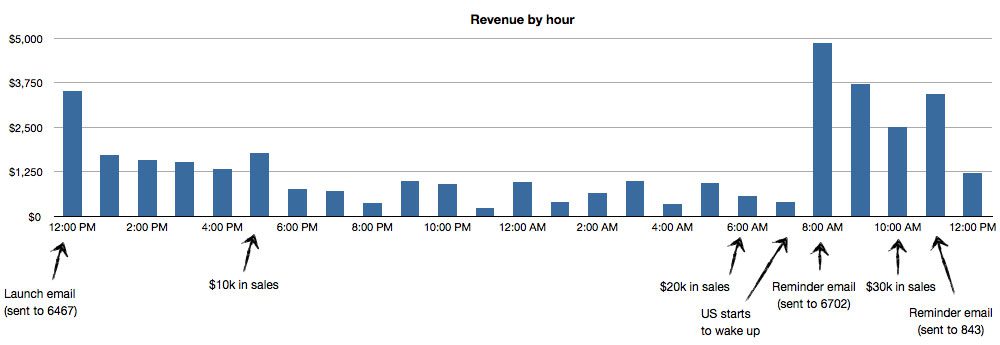
One well-written email can make a big difference in your business.
It can drive new sales, reach new people, or make people engage with your brand. If you do it right, that is.
If you don’t, it will be forgettable. People will just open your email, skim it, and trash it.
So how do you write emails that persuade people to take action? Let’s find out.
The Principles of Persuasion
While much of persuasion is an art, there are certain principles behind it. Robert Cialdini, a professor of psychology and marketing at Arizona State University, found that there are 6 main principles that contribute to how persuasive a message is.
Reciprocity
The first principle is reciprocity. This means that people are more likely to do something for you if you do something for them first.
In email marketing, reciprocity is used in the form of helpful content. If you send your readers helpful tips and solve their problems, they’re more likely to listen to you and buy from you. This also helps with the authority part of persuasion (more on that later).
Consistency
The second principle states that people want to be consistent in their actions. If we say we are going to do something, we’re more likely to do it. If we don’t follow through, we feel bad and it makes us look foolish and unreliable.
Marketers use consistency by offering white papers and other lead magnets. If you sign up to receive a bonus or free ebook, you’ve shown interest in the thing they’re offering. And since you’ve made a small commitment, you’re more likely to buy the product later on. Take the following example:

Social Proof
What would you say is going to do more for your sales? You telling your customers your product is amazing? Or a thousand people telling others it’s amazing? Hint: it’s the latter.
Social proof is such a powerful persuasion principle that it alone can skyrocket your popularity. Here’s an example:

In 2017, Oobah Butler started a restaurant called The Shed and made it the most popular restaurant in London, according to Tripadvisor. There was only one problem: it didn’t exist. It had no cooks, no customers, and the “restaurant” consisted of a couple of tables in front of his shed in his backyard. Even the pictures of the food were fake.
So how did he manage to do this? Well, before starting the experiment, Oobah made his money by writing fake reviews for restaurants. While it’s not the most ethical thing to do, he noticed that the restaurants he wrote reviews for were doing better after a while. He knew the social proof worked.
So when it was time to market his fake restaurant, he got his friends to write raving reviews about it. After a couple of weeks, people started calling for reservations (he told them they were booked many months in advance). And after a couple of months, he was number one on Tripadvisor.
Authority
Think back to high school. If you had a problem with math, who would you go to? The math teacher, right? You go to them because, at that moment, they are the authority on math.
In email marketing, you can build authority by teaching your readers something valuable. If you do this consistently, your readers will start to look at you as the authority in your field.
The great thing about this is that you don’t have to be the world’s leading expert on your subject. You just have to know a little more than the people you are teaching. To you, your math teacher was the expert. To a quantum physicist, your teacher was a beginner.
Liking
Nobody likes buying from companies they dislike unless it’s absolutely necessary. Whether we like a business or not plays a huge role in persuasion.
That’s why large companies hire celebrities to use and promote their products. Putting a familiar face on a brand makes it more likely that people are going to like the brand as well.
Scarcity
Scarcity can be a powerful persuasion principle. It triggers our fear of missing out (that’s FOMO, for short) and makes us more likely to buy. With product launches, for example, the final reminder emails tend to drive the most sales.
Here’s an example from Nathan Barry of what scarcity can do to your sales. Notice the effect the reminder emails have.

You have to be very careful not to create fake scarcity, though. If you’re selling a digital product and you claim “supplies are running low,” people are going to see right through that.
Instead, use a specific time frame like Nathan did.
How to Start Writing Persuasive Emails
These principles are great, but how do you start to write good emails? Let’s go through a couple of ways.
Do more research
It cannot be said enough: good copy starts with solid research. You need to know the answer to the following questions about your customers:
- What do they fear?
- What do they want to achieve?
- What are the main obstacles that prevent them from reaching their goal?
Once you know these things, you can start to write highly persuasive emails. If you get really good at this, you’ll start writing emails that strike a nerve and make people think you’re in their head.
Create a swipe file
A swipe file is a collection of examples from other people’s campaigns that serve as an inspiration for your own marketing efforts. Copywriters use them a lot to get started on their own pieces of copy. They collect sales pages, emails, and other marketing material that has a proven track record.
When they get a new assignment, they flip through their swipe file to see if there’s something they can build upon. This improves their workflow and it helps prevent writer’s block.
Use frameworks
Marketing copywriters rarely write copy, they “assemble” it. They pick a framework that matches what they’re doing and build on it to create highly persuasive pieces of copy.
There are endless frameworks out there, but here are the most important ones:
PAS: Problem – Agitate – Solve
PAS is a classic copywriting framework that works with loads of different types of content. Emails, blog posts, sales letters, and landing pages can be made highly persuasive with this framework.
It’s pretty simple. First, you call out your audience’s biggest pain point. Next, you twist the knife and make your readers realize just how bad the problem actually is.
Finally, you provide relief by giving your readers the solution to their problem. Usually, this is your product or a lead magnet.

AIDA: Attention – Interest – Desire – Action
AIDA is probably the most well know copywriting framework around. It’s simple and has a proven track record. The downside, though, is that it can be quite vague for beginners.
“Get their attention” isn’t a helpful instruction if you don’t know how. Here’s how it works:
First, you call attention to a pain like the PAS formula or you present an interesting statistic. You talk about the problem and how it affects the reader.
Next, you pique your reader’s interest. This can be done by sharing your solution to their issue(s). You tell them their problem doesn’t have to be a problem anymore and that there are ways to solve it. You can use images, statistics, examples, all the good stuff that makes good copy work.
In the desire phase, you talk about how to get your product, the bonuses they’ll get, and how buying your product (or donating to your cause) will affect their lives.
In the last part, you give people a clear call to action so people know what they need to do in order to get your product.
PPPP: Picture – Promise – Prove – Push
A lot of copywriting frameworks focus on the problems customers have. While this works like a charm, sometimes you want to take the positive route and show them how they can improve. The 4P framework helps a lot with this.
With the 4P framework, you’re first going to show your reader what their situation could look like. You talk about the ideal scenario and make it as detailed as possible.
Next, you promise the reader that you can take them from where they are now to this ideal scenario.
Promises alone aren’t enough, though. You’ll need plenty of proof that what you’re saying works. You do this by providing ample amounts of social proof and case studies.
Lastly, you push people toward action. You give them clear instructions on what to do next and how to get the solution you’re offering.
Make your copy interesting with AFOREST
If there’s one thing copywriters love more than good copy, it’s complicated acronyms. and AFOREST is one of them.
All the letters in that acronym represent an element that you can use to make your copy more interesting. The letters stand for:
- Alliteration (repetition of consonant sounds, like Dunkin Donuts, Coca-Cola, Best Buy,…)
- Facts
- Opinions
- Repetition (“I have a dream” gets repeated over and over in Martin Luther King, Jr’s speech)
- Examples
- Statistics
- Threes (Repeat a sentence structure three times to make it memorable.)
Sprinkling these throughout your emails will make them easier and more memorable to read.
Learn basic psychological tactics to increase your copy’s effectiveness
Great copywriters understand that sometimes you need to use psychological tricks to get your point across. And while there are plenty of tricks and tactics you can choose from, here are some interesting ones:
Frame your solution in a positive way
In an experiment done by Khaneman and Tversky, researchers presented two different treatment options for a hypothetical disease that affected 600 people.
- Treatment one would save 200 people.
- Treatment two would kill 400 people.
Even though the end result is the same, more people picked the first treatment because they thought it was a better result.
This tactic is used a lot in advertising. Ads will says 9 out of 10 doctors agree a product is good. No ad ever says one doctor thinks their product is bullshit.
The Rule of 100
In sales, the way you convey the amount they save affects how people perceive your sale. If the amount people save is under $100, it’s best to display the amount saved as a percentage. If the amount saved is over $100, then show the actual amount.
Use real numbers instead of percentages for more impact
In an experiment done in 2000, researchers wanted to know if conveying percentages in terms of people changes the way people perceive it. They asked two separate groups of physicians to judge whether or not they’d discharge a patient.
One group got told that patients similar to Mr. X had a 20% chance of committing an act of violence.
The second group got told that 20 out of a 100 patients similar to Mr. X are estimated to commit an act of violence.
As a result, more physicians in the second group refused to discharge the patient, thinking the risk was too great.
Focus on one thing
A common mistake beginners make is they try to focus on too much at the time. It’s hard to grab someone’s attention, so they try to ask everything in the short time they have.
But this makes your emails messy. If you ask everything all at once, your chances of getting it are nearly 0%.
Instead, focus each email on one thing. Want donations? Make your email about donations only and only ask them to donate. Don’t ask them to like your Facebook page, don’t ask them to follow you on Instagram, keep it simple and ask for donations. You’ll find you’ll get more results that way.
Do the barstool test
When you’ve finished your email, try to do the barstool test. It’s pretty simple:
Imagine being at a bar, sitting on a barstool and reading your email out loud to the person next to you. Does it sound like something you’d say?
A big mistake beginners make is that they try really hard to make their emails persuasive and as a result create emails that sound nothing like them. They come off as pushy and salesy while their brand is about caring for people. This incongruence kills conversion rates.
The barstool test makes sure your emails sound like you and are consistent with your branding.
Conclusion
Like we said earlier, persuasion is an art and a science. The key to writing persuasive emails is to remember that you’re writing for other human beings.
You can throw all the science-backed techniques into one email and it still might not work the way you think it would.
That said, the principles and techniques described in the post will get you going on your quest to write more persuasive emails.
What’s your favorite persuasion technique? Let us know in the comments.
Robin Geuens is a freelance content marketer who helps SaaS businesses write content that gets more traffic, subscribers, and leads. You can find him at Atompilot.com.

